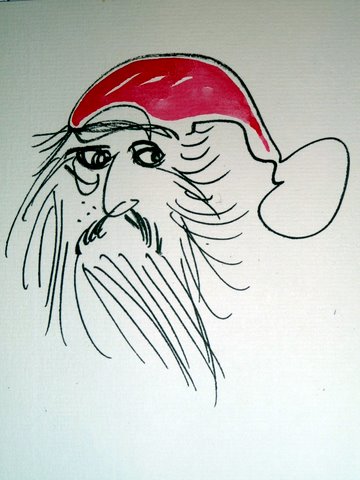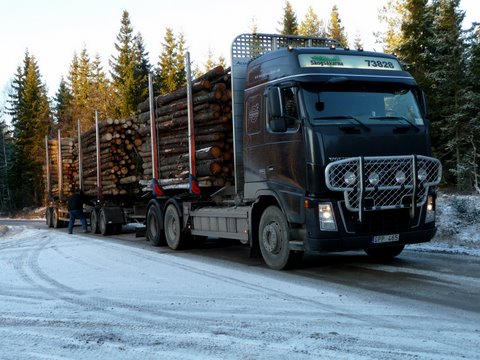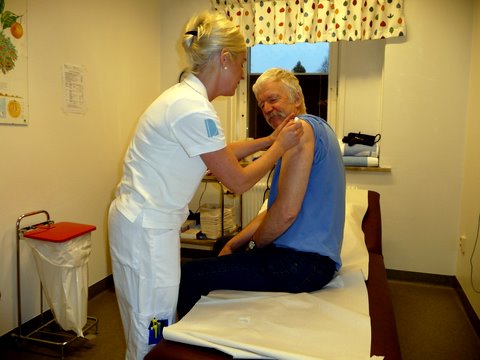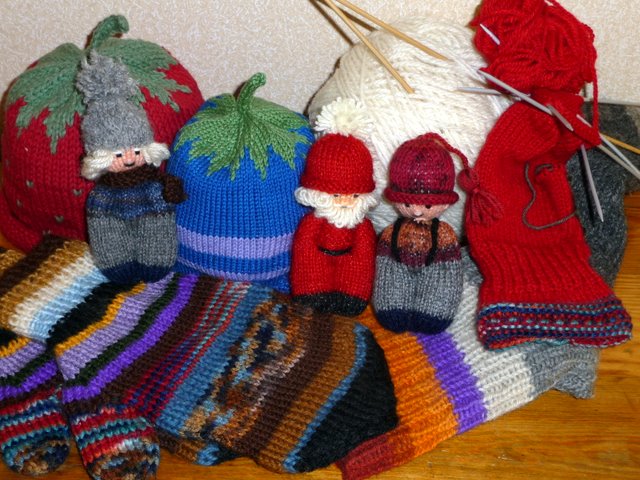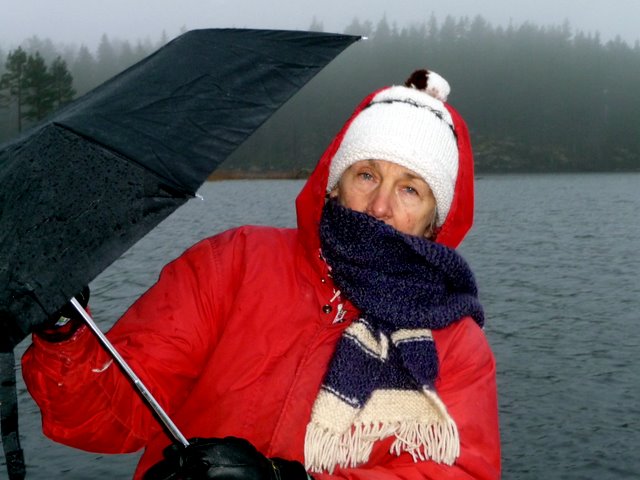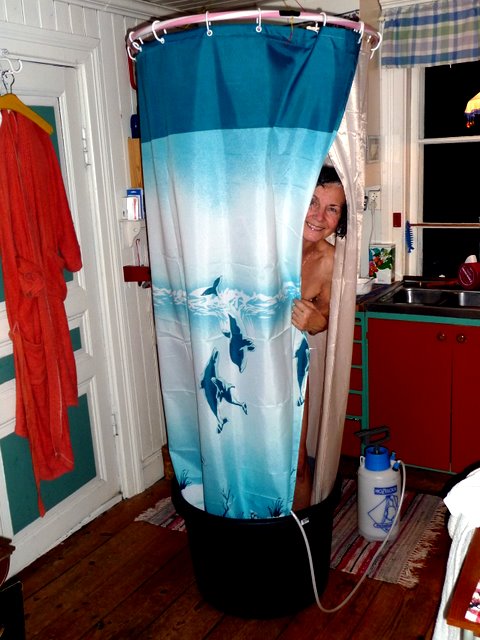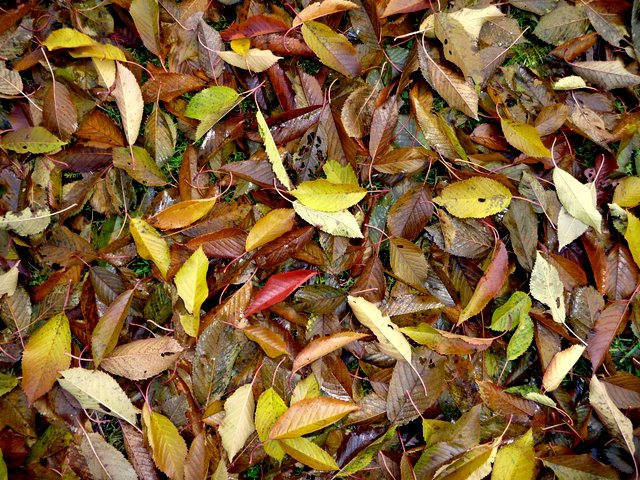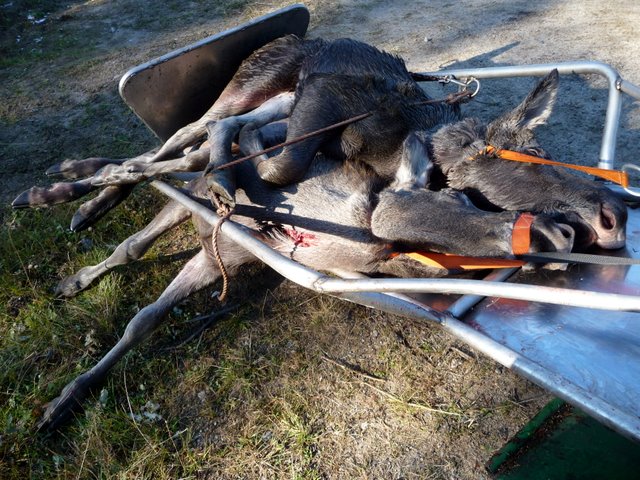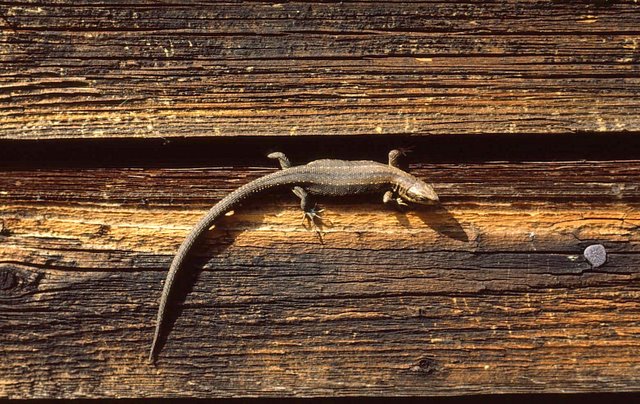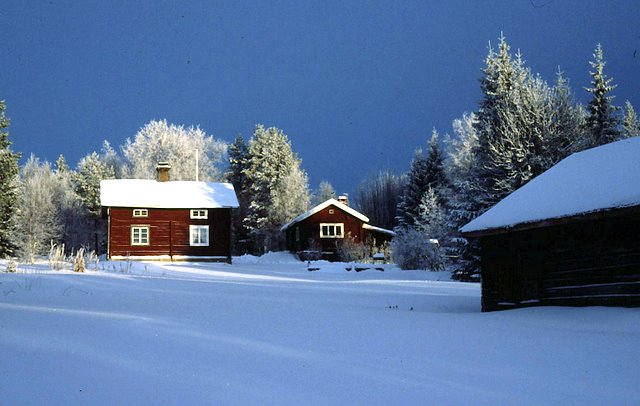| MONTHLY JOURNAL 2009 |
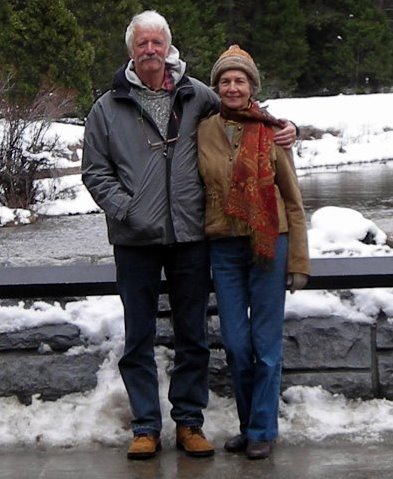 |
|||||||||||||||||||||||||||||||
|
We woke up one morning
realizing that December has arrived, with Christmas rapidly approaching the
thought of sending Christmas cards presents itself. This year we can’t
escape this pleasant burden by being far away in Mexico. The cost of masses
of commercial cards to customers, friends and acquaintances causes some
reluctance. One solution is to make a personal Santa motif, leave it to our
printer in Svärdsjö and, for a reasonable sum obtain a bunch of identical
cards. A few short snowfalls at the beginning of the month cause the lumber
company to hurry and haul the timber from the forest before the roads are
closed. All day we hear the heavily loaded trucks passing just north of our
house.
For fear of contracting the
Mexican swine flu, most Swedes agree to the recommended immunization. The
delayed flu vaccine finally arrives at the primary care center in Svärdsjö.
The atmosphere is somewhat jolly, as often, when people face a common
ordeal. We receive a queue number, wait for a few minutes for the sting in
the arm, and it’s all over. Our charming nurse readily agrees to pose before
the camera as we ask to immortalize this event.
Heavy clouds are mounting, and by afternoon the snow is here. At first, a few single flakes, but soon it is a full-scale snowstorm. When we raise the shades in the morning, the landscape has been transformed; hills and forests are covered by thick snow so intensely white that it almost blinds us. By the end of the month our faithful friend, Sven-Erik with his tractor have come to clear the snow at least three times so we could get out. We spend Christmas peacefully by a flaming fire, read and listen to music. The darkness is like a black wall outside frosty windows. Midwinter!
All of a sudden, it is
November. Christmas is at hand at Bibi hurries to knit her various articles
for friends and relatives and for an occasional sale.
After spending several winters in Mexico, our menu sometimes gets a hot touch during the cold season. Here is a dish, seldom seen among all the exotic recipes published in our weekly magazines. “Tamales”, always a success with our friends, are made from corn meal dough with chili, chicken or pork, flavored with hot mole or green sauce, wrapped in cornhusks and steamed for an hour. Good with tequila and/or beer!
The trees become bare in no
time at all. A gust of wind and the leaves fall to the ground like a shower
of gold coins as the sun periodically peeks through the clouds. The moose
hunt closes early in the month. The last moose, two young calves, are shot
just a few hundred meters from our house. We venture out in the woods to
chat with the hunters. On the slopes above the logging road they have run
into a bear and a couple of roaming wolves, and south of the village on the
shore of Långvintjärn a hunter ran into a female bear with her three cubs in
tow. In spite of him waving and hollering, the bear kept coming
uncomfortably close, and he had to give a warning shot for self-protection.
“Böl’s church”, in the woods
between Vintjärn and Böle, is a giant erratic block placed there by the
inland ice about 10.000 years ago. This giant boulder is a full 12 meters
high and seen from a certain angle, it leans like the famous tower of Pisa.
It is narrow at the bottom and stands “like on a stem” as the district
researcher Karl-Erik Forsslund once expressed it. You can easily reach it
from a logging road as long as it is clear of snow. Now and then I pass this
huge boulder when fishing Vinnar-ån, a small trout stream that meanders
through alternatingly boggy, forest- and block terrain.
The first snow hits us on the 12th of the month and the landscape receives a thin layer of new snow like the frosting on a cake. Suddenly all sounds are muffled and we are enveloped in a cocoon of silence. Early mornings we can track moose as well as fox and hare. The cold becomes more and more obvious. Our laundry, hung with numb fingers, quickly converts into unmanageable stiff “sails”. Time to prepare for winter! Make sure the chimney is swept, stock up on firewood, darn woolen socks, change tires on the car and fill the bookcase for long winter evenings by the fire.
A new month and the bear is
preparing for its winter sleep. I travel to Norway and my friend Ola for a
week of fishing, only to find my river unfishable. The water is much too
high, grey and filled with millions of autumn leaves brought down by the
storm. We do other things, like spending one whole day high on the beautiful
mountain heath. In a sheltered spot we enjoy a cup of coffee and reminisce
about the summer in 1983, when we climbed the highest peak of the Sölen
massif. I was in bad shape after a major operation, and Ola suffered from
back pain. It took us all day – but we made it!!
Bibi spends all of September
in the US, mainly to attend the wedding of Roland and Kari at the Emanuel
Swedenborg church in San Francisco. Besides visiting three daughters in
Boston and Baltimore, she also has time for some fishing with friends. At
the Rappahannock estuary on the Atlantic, the party catch a variety of fish,
among them a Blowfish. A curious looking thing which, when frightened,
quickly blows itself up. On the last day of the month Bibi takes off from
Philadelphia with US Airways, and on the next day I fetch her in Falun, as
she arrives by train from Arlanda airport.
September is usually my best month for pike-fishing. This year is different. After heavy rains, overflowing lakes and ponds are difficult to fish. Strong winds don’t make it any easier. I fish various sizes and colors of Brook’s Blondes, but with poor returns. The pike that do bite are consistently small. The hunting season for moose is coming up, and I will have to plan my fishing excursions with this in mind. Many hunters complain about the subsiding moose stock, often blamed on the increase of bear and wolf.
The slowworm lies like a decorative sling on the path. After a cold night it
is quite stiff and makes no resistance as I carefully lift it. In just a few
weeks summer has turned into autumn. We can read the signs: The silence, the
early morning veils of mist in the valleys and the changing colors of the
trees. On days when the sky is high and clear, views are wide and the hills
show various shades of blue. Constant rains have saturated the earth and
among the mosses between the tree trunks one can spot colonies of
chanterelles glowing like gold.
I have always been suspicious
of wild mushrooms. But the delicious chanterelle gives me no problem, since
it is not easily mistaken for poisonous species. This year we have found
more than usually and in new and unexpected places. Mushrooms don’t always
follow any rules and this in itself adds to the excitement. Finding a new
stand of this “gold of the forest” could readily be compared to the
discovery of a beautiful rise of a trout within easy casting range. The
chanterelle is best fresh and fried in butter. Its nutritional value may be
modest, but it sure is good!
At the end of the month I make one last trip to one of my small trout streams. In my breast pocket, a tin box with about ten flies, among them my favorite, the Wooly Worm. The terrain is cumbersome and branches and tufts grab after sloppy back-casts. It turns out to be a good day, though. The trout are not big, but attack like lightning from their lies under overhang and behind rocks. Toward evening the stream darkens below heavy skies, and when the last fish of the day flap about in the grass, the rain is pouring down. Wet, and somewhat stiff, I make my way up to the road. Of the ten flies I carried, hardly half are left - the others decorate trees and bushes along the banks.
This month goes down in history as one of the wettest in many years. A veritable deluge has come down upon us. Lakes, ponds and creeks overflow their banks. The big event of the month is Bibi's birthday, which we celebrate in the company of friends and relatives beneath the old pine-shake roof. Our daughter Virginia with husband Tim, visiting from the USA, do all the cooking, baking and serving. My humble task is to keep the fire going, heat water and wash all the dishes. A pleasant evening when Bibi, somewhat reluctantly, has to confess to being one year older.
On Midsummer Day year 1687, a
sudden collapse took place in the Falu Coppermine. A complicated system of
supporting pillars and large galleries caved in, creating a 95 meter deep
crater with a 1.5 km circumference, commonly called "Stora Stöten" (i.e. The
Big Blow). Miraculously, there were no casualties, since Midsummer Day was
one of only four days of the year when workers were off duty. Virginia and
Tim take a guided tour into the unharmed part of the mine. A good hour later
they return from the dark well informed about the incredibly primitive
mining industry of more than five hundred years ago.
At the end of the month we take our American visitors to Arlanda for their flight to Boston. We enjoy a cultural detour on the way home. First stop is Skokloster castle, a stately reminder of times gone by. Then north to lower Dalälven River and Gysinge old iron works, dating back to the 17th Century. Other attractions in the region include good fishing for grayling - and dense swarms of mosquitoes. Back home again we search the woods for raspberries among thickets and bear tracks. Berries are abundant, ripe and sweet. Harvest time is all over, the cuckoo no longer calls, and the wind carries a hint of early autumn.
A long period of warm weather around May-June makes nature come alive. In just one week, our house stands in lush greenery, warm winds rustle the birch foliage, rabbits and deer appear from nowhere. In cover of darkness, a moose ventures out from the forest one night. Birds have taken possession of our birdhouses. An aggressive flycatcher comes out to defend his territory from the nuthatch in the next tree. A female bear with three young roams nearby. At dusk, I can hear her chastising the offspring. One of the cubs shows up in the yard one afternoon, black as a raven, woolly and cuddly. Against a background of dark pines, our house is barely visible in the middle of the picture.
For once, we spend the midsummer holiday on the island of Väddö with Bibi’s sister and company. Very pleasant, but I miss the special feeling of a Dalarna midsummer with fiddlers and folk costumes. Bibi then flies off to France to attend a family reunion. She sends me a picture of herself “shrimping” in the waves in Normandie. As for myself, I spend three magic summer nights in my belly-boat on lakes Nysjön and Ågsjön. The Ephemera vulgata is hatching and I lose the largest trout I have hooked for many years. Following a couple of heavy rushes, the line slackens and a mighty tail fin teasingly waves goodbye.
The loss of the large trout, which rose to a “Tjernobyl Ant”, still irks me a little. Nevertheless, I am consoled by the fact that one cannot lose something one has not owned in the first place. Otherwise, the entire month has been about fly tying, disciplining myself to stay indoors. Rainy days were a blessing. The popper is much appreciated, pleasant both to use and to make. Many years ago, I would sometimes on ethical grounds, receive critical remarks about fishing the popper. The critics claimed that a fly should contain only traditional materials, no balsa wood, cork or synthetics.
Just in time for Walpurgis Night, the last snowdrift melted away and early spring flowers began to make their way through the decomposing leaves. The day before, the owl moved into his new house in the big pine. This made us very happy. We hope he will be comfortable, but since field mice are scarce this year, a growing owl family may find it hard to make the food go around. We celebrated the arrival of spring by joining the villagers in lighting the usual bonfire, and while mighty flames illuminated the sky, we sang our traditional, “Winter is over….”. Monica, all bundled up in the cold night, gave the traditional speech to welcome yet another spring.
With the snow all gone, the best time to stock up wood for the winter has arrived. In other words, we start taking down suitable trees, then saw the wood, split and stack it. Slow drying, wood needs a sunny and hot summer in order to burn well when winter sets in. After a bout at the chopping block, it is sometimes hard to switch to fly-tying. Hands get shaky from the hard grip around the axe handle, and the tying thread tends to become caught on rough fingertips. Better to start the day with fly-tying and finish with a dose of wood splitting.
Joe Brooks, American fly fisher and writer, was the adventurer not content with the usual travel destinations. During a time when we still thought of a fishing trip to Norway as a bit exclusive, Joe visited exotic places and caught exotic fish that we had not even heard of. When he died in 1970, he left to posterity, a series of flies, commonly called “Brooks’ Blondes”. One fly, “Argentine Blonde” tied on hook 2/0, gave me several pike last autumn and the same pattern opened this season. The first pike sank without hesitation his teeth into the slim blue-and-white streamer. Bibi mastered the oars and besides had time to make a picture.
We land at Arlanda on a misty morning after an overnight flight from Chicago. At the last minute, we catch an early train to Falun the closest town to Vintjärn. Sven-Erik, my old classmate has cleared the road to our house, which has stood deserted for months. There is more snow than we have seen for many years; the snowdrifts are nearly as tall as man. We wade waist-deep to make our way to outhouse and woodshed. Temperature is just blow zero C, and as soon as we get the fires going the house feels warm and cozy. We relax with a cup of coffee by the crackling fire after a “day” that lasted for more than two days and nights.
Winter is nearly over. However, before the light returns, we experience a few cold nights when the sky sparkles with millions of stars and galaxies. We feel small in an infinite universe. Only the constant song of the Tengmalm’s owl disturbs the total silence at night. At the end of the month, the weather gets warmer. The snow quickly melts creating rivulets on the slopes. Our well water takes on the color of light beer. The fox and the badger, sharing living quarters under the barn, make extensive trips in the surroundings. The badger, just awakened from his winter sleep, plods through the snow on short legs searching for something to fill his empty stomach.
We leave the Pacific Coast and drive on slippery winter roads to the overwhelming wilderness of Yosemite Valley. We spend the night in a heated tent, our food in a metal locker outside. The black bears here do not hibernate! Now and then, huge avalanches rush down the nearly perpendicular mountainsides. After the typical green hills of California, we find ourselves in a landscape of snow and ice. In 1864 the area was protected against development, when President Lincoln signed the Yosemite Grant. The native Ahwahneechee Indians disappeared after hand and gave way to naturalists, artists and later, to tourists. We are greatly impressed by the Sequoia trees. Tough giants that were just green shoots during the reign of Cleopatra in Egypt, i.e. a century before Christ.
This view, usually photographed in summer, with the Merced River with Half Dome in the background, often turn up in fishing articles and books. For those who want to fish here, a barb-less hook is the rule. The rainbow is natural to Yosemite, and is not to be killed. Brown trout, on the other hand, is a newcomer and may be caught and eaten, if you are happy with five per day. What else? Yes, on Sunday morning we went to the village church, and since we were visitors from far away, the small congregation applauded us.
We don’t see much animal life at this time of the year, but we succeed in getting a picture of a group of unafraid mule deer that have gathered on snow-less ground. Otherwise there are, besides many different birds, fox, squirrel, raccoon, coyote, rattlesnake and black bear. Mountain lion (puma) live on the slopes, a cat of about 70 kilograms of pure muscle. A brochure informs you how to behave if you encounter an aggressive puma. “Stand still – look the cat in the eye – wave your arms and yell – throw objects at the animal. If, in spite of this, the puma, attacks you, STRIKE BACK!!!”
Many, both young and old, put on their beautiful folk costumes during Catholic holidays, and with passion and joy, perform whirling Mexican dances to lively Mariachi music. The celebration of their saints becomes a mixture of religion and the paganism. We enjoy going to mass and are used to kneeling and making the sign of the cross in spite of our protestant background. One day, as we pass the church, the priest is standing by a side door, blessing the people who bring symbolic gifts to the Virgin of El Pueblíto. Incense is rising like a light summer cloud in the blue sky. The priest sprinkles holy water on the people that have gathered, but soon finds that he can’t reach everyone. He solves this by filling a spray-bottle. Bibi and I also receive a puff of the blessed mist. Psst! psst!
The road to Concá leads through the land of the mountain Indians, and is not for he who has a tendency for vertigo. Houses seem to hang like swallows nests on the steep mountainsides. The air is thin and chilly. A steep downward road takes us to Jálpan, and soon after, we arrive at Concá. The village is small and insignificant, but has fascinating surroundings. Warm springs well from the ground, the mountain slopes are draped in almost impenetrable jungles, and a beautiful river runs through the valley. We make our way in a terrain where branches, vines and tree roots reach after us like greedy fingers. On the shore, we run into an angler, resting comfortably against a huge tree trunk. We ask what he hopes to catch, and the answer is “trucha” (öring). We have stayed at Concá for a few days and travel back to El Pueblíto tomorrow. We agree that after nearly five months, it is time to begin the long journey home.
On a Thursday evening, we fly from Mexico City and arrive late at night in San Francisco. Not the shortest way to Sweden, for sure, but we are in no hurry. During a couple of hectic days, we enjoy the typical tourist attractions in San Francisco. We pose by the Golden Gate, take a random look at San Quentin and the island of Alcatraz, go by cable car on steep hills to Chinatown, enjoy a bowl of clam chowder at Fisherman’s Wharf and look at the sea lions seeking night quarters on Pier 39. One day we travel along the coast to the lighthouse at Point Reyes and later, wander for hours in the famous Redwood Forest.
Our New Year starts with the traditional “corrida de toros” at Santa Maria, the bullfight arena in Queretaro, Mexico. Ranchers from the district, who have brought their genetically selected fighting bulls from green pastures to a walled in “toril” under the arena’s bleachers, tensely wait to see how their bulls will perform. From our barrera seats, pleasantly shadowed at four in the afternoon, we see the matador in a glimmering “traje de luces” (dress of lights) throw his “montera” across his shoulder with a gesture, which, depending on how the headwear falls, means either luck or misfortune. Suddenly the arena is empty and, at a trumpet call, the door of the toril is opened and the eyes of the spectators focus on a mighty black bull rushing out to the circle of well tended sand. One of the matador’s cuadrilleros catches the bull’s attention and handles his red-orange capote in a slow and sweeping movement when the bull, grunting with pent up energy makes a wild attack. I have always had an interest in the corrida since my summers in San Sebastian and Pamplona, where at a reasonable price I could watch great matadors like Antonio Ordoñez, Paco Camino and El Viti perform on the arena. I appreciate the music, colors, rituals, traditions, seriousness, pride and the incredible courage. Many regard bullfighting as morally unacceptable, and organizations like “Antitaurina” works hard to put a ban on it. My approach to the corrida is mainly emotional. I may feel disgust after a bad corrida, but I always experience a pleasant chill along my spine when the orchestra intonates “el Gato Montes”, a paso doble often used when a matador in the latter part of the corrida performs a magnificent “faena” bordering on magic.
The last three years, we have spent the winter on this winding street in the village of El Pueblíto. Every day we walk the short distance to the plaza, nod “buenos dias” to people we know and perhaps buy a few tamales, which we enjoy in the shade of the lush big trees in the square. In a doorway, a woman is toasting corncobs; another is making tortillas by hand. The tempting smell of mole reaches us from the little family kitchen we pass. Every twenty feet, homes have tiny storefronts where you can buy many of life’s necessities. At the market, they sell everything from clay pots and clothes to fresh fish, fruit and vegetables. Sometimes we feel like we have been moved to an almost medieval society, but modern times are ever present. Big cars crowd the narrow sidewalks, and during our walk, we count three internet cafés, four hairdressers and a gym. Far from the ruthless drug war further north, the village is still idyllic. People don’t know much about Sweden, even though Göran Eriksson became the new coach for the Mexican national soccer team last year. His long line of defeats has hardly made them more curious.
A major event of the year is the weeklong celebration of the patron saint, “La Vírgen del Pueblíto”. Almost daily, processions pass through the village with loud music and firecrackers popping along its route. At night, people have private parties, where they eat, drink and listen to booming ranchero music. This usually goes on well into the small hours of the morning. During the fiesta, each day is an adventure. One morning we encounter two giant oxen, decorated with all kinds of vegetables, come thundering through the narrow street with a large congregation of people in tow. That afternoon the oxen will be slaughtered, and everyone is invited to enjoy a nourishing broth. One night our next-door neighbors, the Ramirez family, invite us to with other friends and, share a meal of mole with pork. A milk-like drink, pulque, made from fermented agave leaves with a slightly intoxicating effect, is served with the food. Beneath a blue tarp, strung up between the trees, is an 8-l0 man orchestra that adds to the festive mood. The evening is pleasantly warm, and at dusk when the music eventually quiets down, the sound of a thousand cicadas fills the air with their song. |
||||||||||||||||||||||||||||||||
